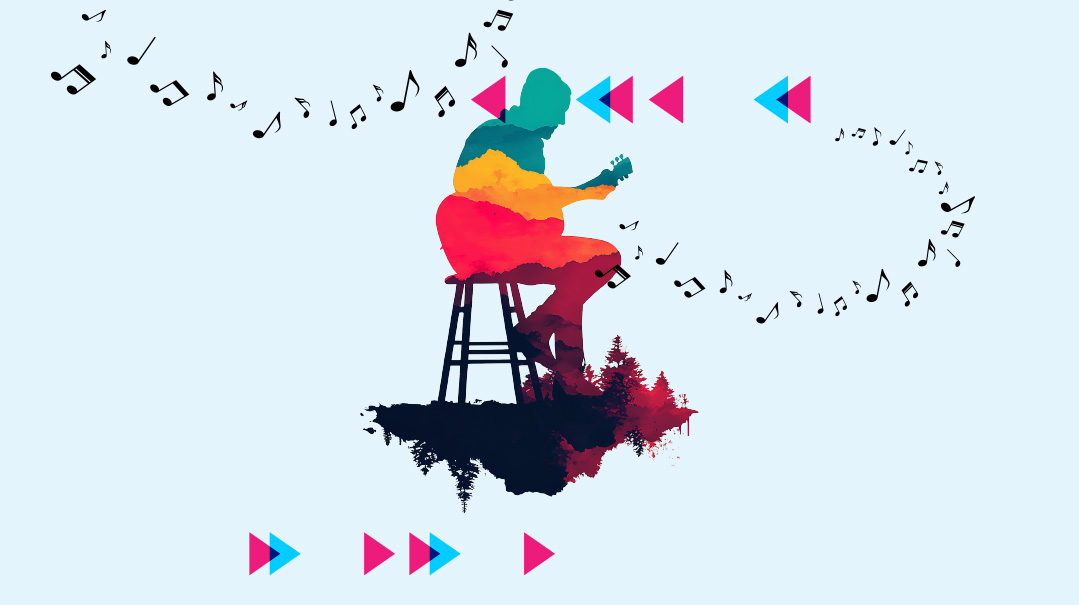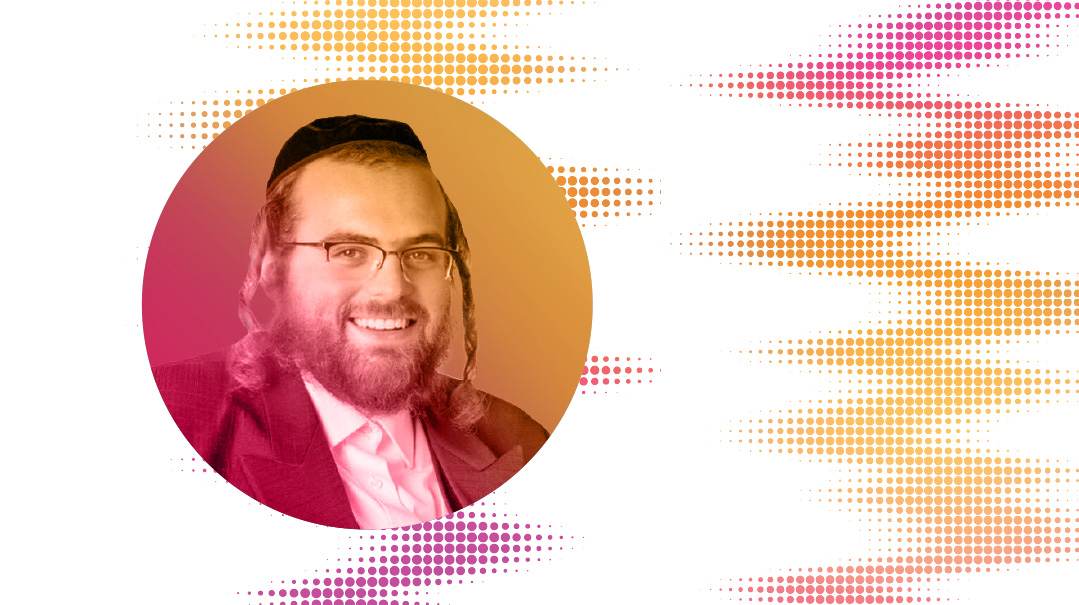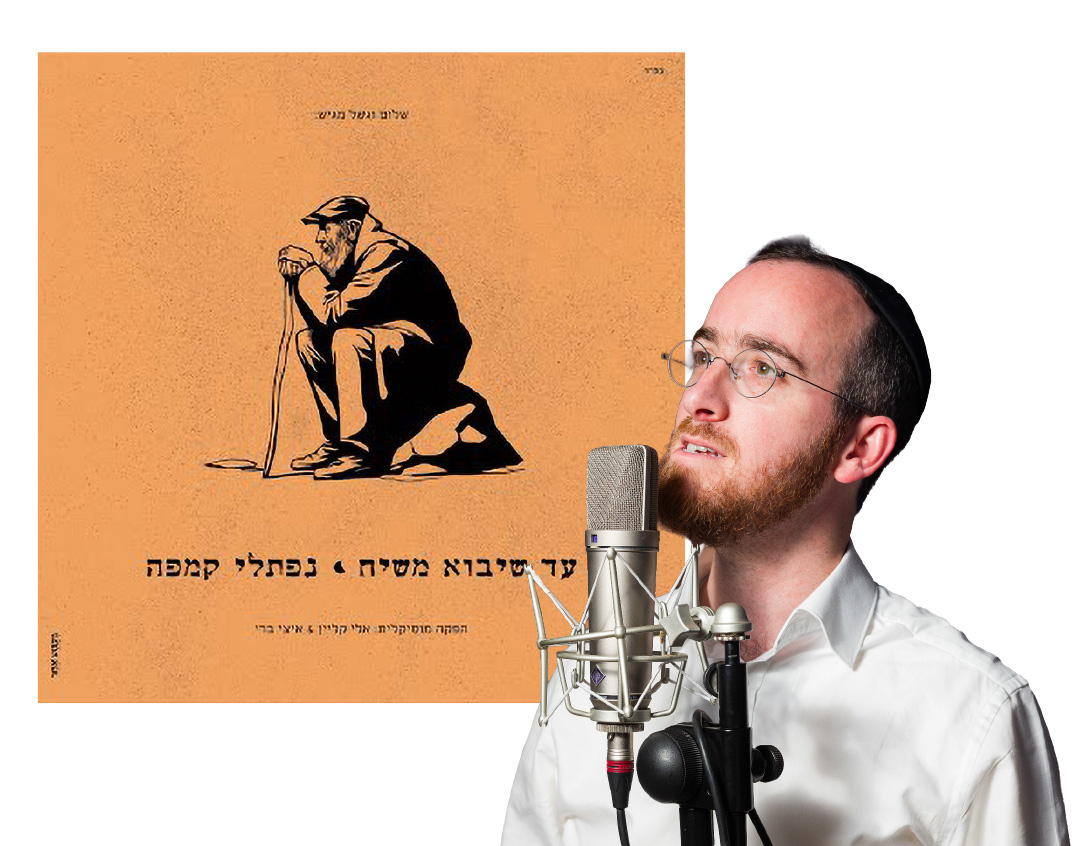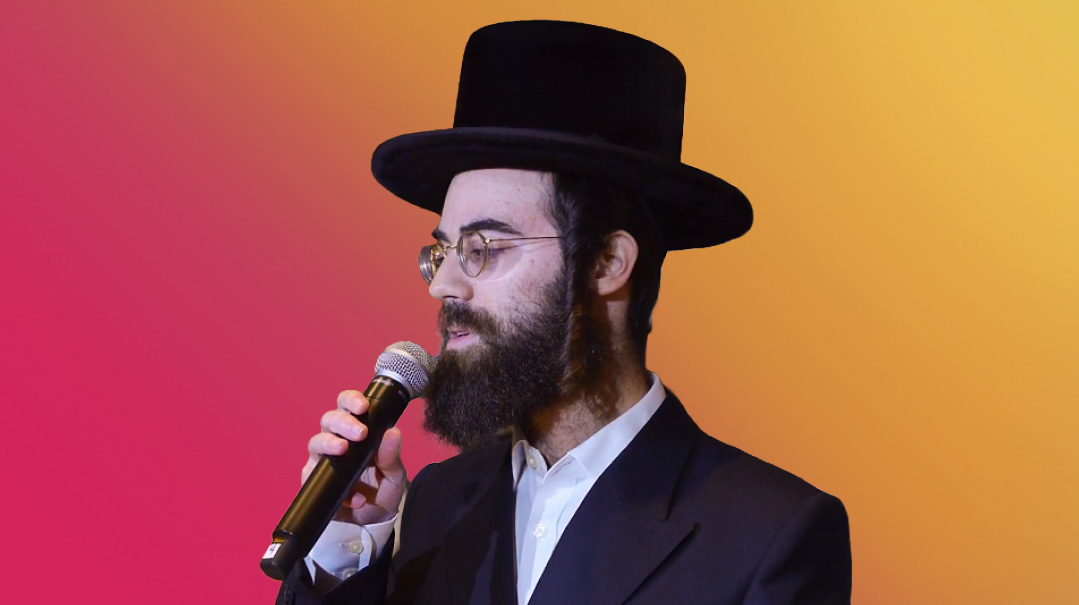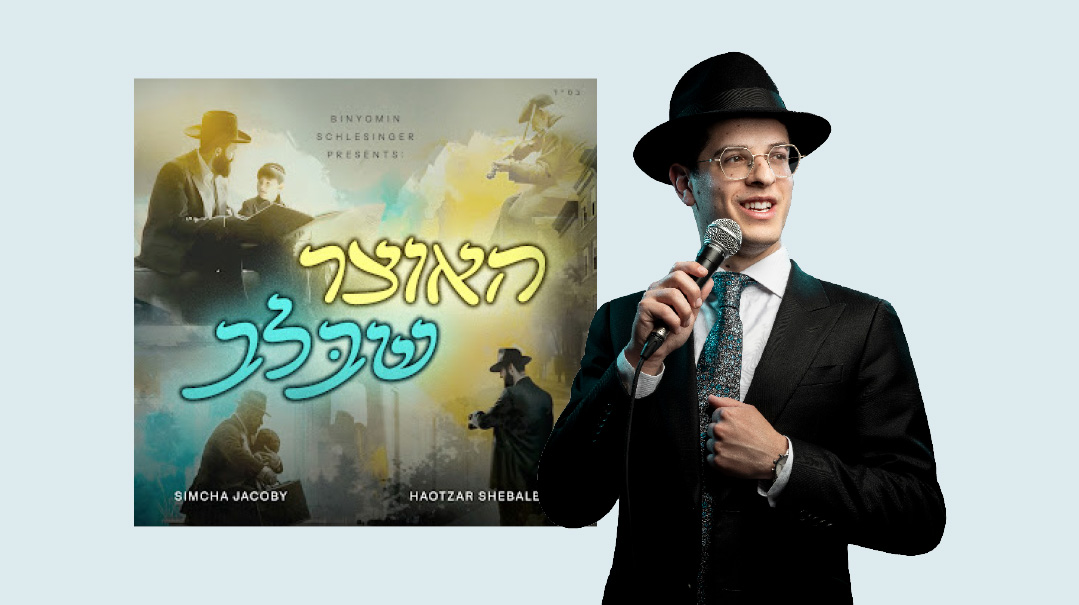With One Voice
| April 3, 2023The maestros who’ve adopted the new entertainment genre say the energy and sheer joy created in these concerts of unity are their greatest reward
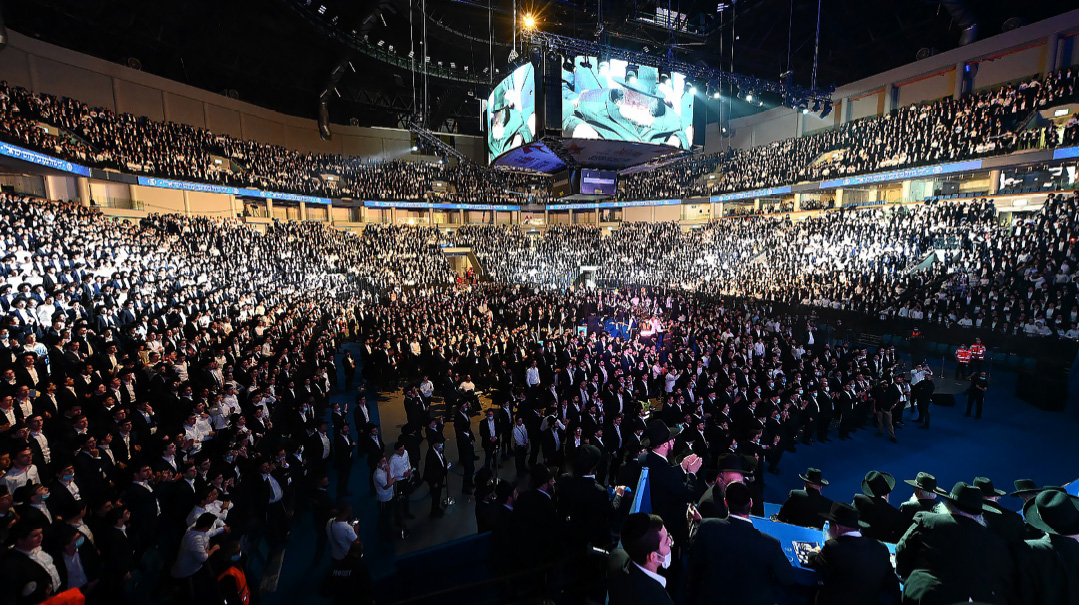
Photos: Kol Barama, Nati Albar
TO combat the polarization and division that seems to drive Israeli society, a social-musical phenomenon known as “Koolulam” began bringing people together to drop their agendas for a few hours and instead spend the time singing in unison — forming a collaborative musical creation bypassing barriers.
While Koolulam is a national initiative and not geared toward the gender-segregated religious public, the idea was intriguing: Why not try a “frum Koolulam” — a mass-singing event bringing hundreds, or even thousands of bochurim and men together to not only listen to a concert, but to create their very own sound?
Four years ago, on Chol Hamoed Succos of 2018, famed Israeli conductor and music creator Yoeli Dickman produced the first chareidi Koolulam in Jerusalem’s Binyanei Hauma convention center, under the name “Yeshivishir.” Since then, these mass singing events, which turn the entire audience into performers as all attendees have their separate parts in what becomes a massive choir, have become the entertainment of choice, from Tzfas in the north to Be’er Sheva in the south.
As the skilled music director divides the crowd into sections, he has just 50 minutes to teach them melodies and harmonies that will become a thousands-strong wall of music that swells up and uplifts participants in incredible, beautiful unity.
While it might seem counterintuitive for these industry professionals — who prefer to work only with the “best” — to feature untrained singers of all ages as the new performing stars in their concerts and music clips, the maestros who’ve adopted the new entertainment genre say the energy and sheer joy created in these concerts of unity are their greatest reward.
It’s All About the Audience
YOELI DIKMAN is the trailblazer in bringing these mass singing events to frum crowds, under his “Yeshivishir” banner, where thousands of tickets sell out within hours of being released. He also runs mass singing events for yeshivos and camps. Yoeli, composer, conductor, singer, arranger, producer and chareidi radio host, is one of the most talented musical personalities in today’s Jewish music world. A high-energy showman, he’s always pushing for new, better, more professional — which makes this new niche he’s carved out an interesting twist.
THE SONGS THAT WORK BEST
It is easiest for the crowd to learn and sing a quiet song, a song of feeling and emotion, and those songs give the best outcomes for Yeshivishir. But this year, when someone asked me to help out with choosing a song for our first girls’ mass singing event, they specified that they wanted something with more tempo, beat and energy. For some reason, the girls do better with faster songs.
HOW I KEEP THE CROWD ENGAGED
In addition to the singing, I find that the crowd needs something else to keep things exciting and fresh. I always add surprises to the Yeshivishir experience, which have become part of their popularity. We’re always looking for a gimmick. When we sang Rabbi Baruch Chait’s “Lo Amus” in Yeshivishir 4, we hired a magician for the stage, and I folded myself up into a box which would then be stabbed with knives. It’s a standard magician’s trick, but boy, was it hard work for me — I had to practice for weeks folding myself in half, but the crowd loved it. We did “Abba Melech Ha’olam” with a laser light show, and I have a gimmick where I get the audience to find their pitch by playing cups filled with different water levels or playing a violin bow on a saw. For Yeshivishir 5, we did the song “Piha Pascha… (Sha la la la la)” and not only did the crowd sing, but we had a surprise appearance of four all-star singers on the stage, including Yishai Lapidot, who composed it, and Ohad Moskowitz, who first sang it.
MY INSPIRATION FOR THESE EVENTS
For me, it’s all about bringing people into music. Not as listeners, but as creators, because that’s where the real joy is.
MY BIGGEST CHALLENGE
The first challenge is to choose the right song. Yeshivishir audiences include chassidim, Litvaks and Sephardim, children and bochurim, as well as adults. I have to think through all the options and hit on a song with universal appeal. We’ve used Carlebach’s “Mimkomcha,” and the hit “Abba Melech Ha’olam.” I make a shortlist of possibilities, then I do a quick survey, asking a dozen people which song they would prefer. I can never be 100 percent sure that the song will work, but with the right understanding and research I can get to 99 percent sure.
The first year, I wasn’t sure how strong the final song would turn out, so I went to the studio and recorded some tracks to add to the mix, just in case. But that was the first and last time. Yeshivishir 2, 3, 4, and 5 and are 100 percent live recordings. We have 20 condenser microphones all around the auditorium to capture the sound.
The next challenge is holding the crowd. I’m not a rosh yeshivah giving shiur klali who can hold the bochurim for an hour with no talking or laughing, and these crowds tend to have a lot of energy. So, to hold them for an hour, I need to plan exactly how I’m going to do it. Part of the solution to getting everyone singing is to divide the crowd. Psychologically, it gives each individual some responsibility. If everyone sings together, Dudi doesn’t have to sing, because he figures that Chatzkel and Moishy are singing anyway. But if Dudi’s in a group and has to sing certain phrases at certain tempos, he has a job with responsibility. We also teach each group both parts, so that everyone has a chance to sing the main and the harmony and no one resents anyone else.
HOW I PREPARE
First, I decide on the song we’ll be singing, and then I write all the vocal arrangements. The songs have to be very practical — no fancy, intricate arrangements, because that will be too complicated for a large crowd to sing. It has to be special, but simple. Remember, 3,000 people have to grasp it within 50 minutes. Slow and simple always works best.
THE CONCERT THAT ALMOST WASN'T
The first Yeshivishir, back in 2018, because people didn’t know what we wanted from them. I brought this concept to the chareidi world, and special credit goes to the Kol Beramah radio producers who prodded me along, but the crowd didn’t quite get the idea that they hadn’t come to watch but to sing. We had to work hard to get the music out of them.
My Audience Connection
Two years ago, there was a tragic road accident in which a young avreich from Bnei Brak lost his life. I saw his picture in the paper and said to my manager, “Who is this? His face is so familiar.” We looked at the unedited previous year’s Yeshivishir video, and there he was, front and center together with his little boy, waving his arms and singing with all his heart. The video focuses on his shining face, and for the grieving family, it was a special treasure.
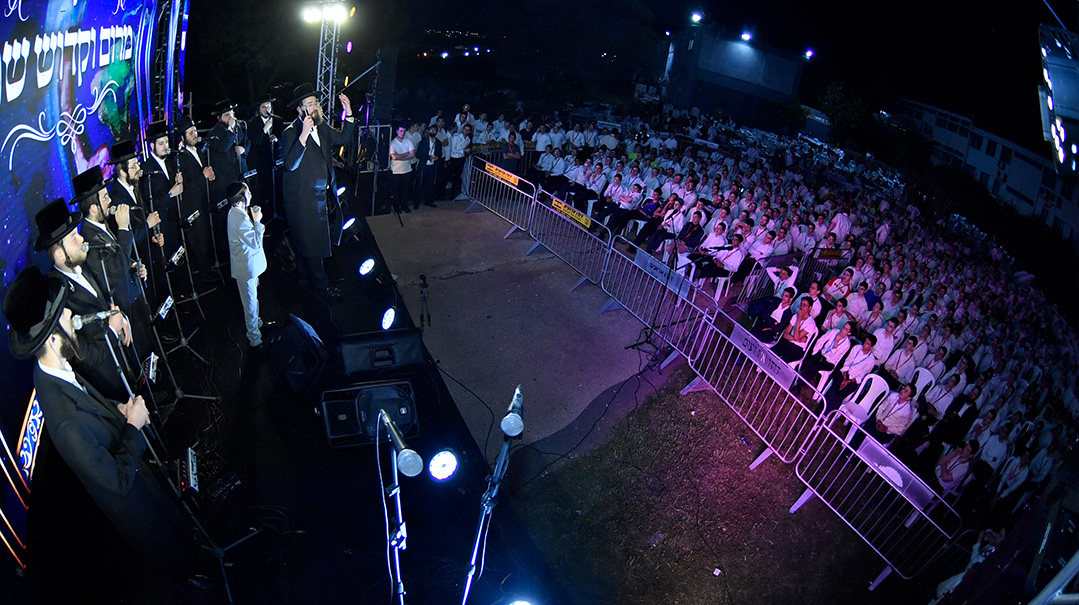
We Love Singing Together
REB PINCHAS BICHLER, conductor of Malchus choir which he founded in 2013, is a highly creative vocal producer and constantly in demand to run mass singing events for children and young adults. He’s a Sadigura chassid and composer for the chassidus’s court. He’s also a longtime music writer and researcher. He runs his brand of Koolulam productions under the name “Kol Ha’olam.”
HOW I PREPARE
I first need to know about the crowd, whether it’s chassidish or Litvish, children or bochurim. Singing with cheder children is beautiful, because there is a certain purity in the voices, but older singers are more capable. Also, I like to know if this is their first program of the day, or if they’re coming after a long trip. How much patience do they have? And how much do they appreciate music? I need to make sure that we have a good, quiet place to sing in, with decent acoustics. Outdoors can be a beautiful experience, but acoustics are better indoors. Sometimes I take my Malchus choir or a singer with me. It adds extra interest, and the choir sings the harmonies and makes it easier for everyone to catch on.
HOW I KEEP THE CROWD ENGAGED
The energy and atmosphere have to be alive enough and interesting enough to hold the crowd. We all know what happens when a couple of guys lose interest and start to walk out of the room. So I have to keep my finger on the pulse. If it goes cold in the middle, I switch songs, using the camp anthem or theme song or any exciting song to wake them up. In between singing I use humor, jokes, stand-up comedy — whatever it takes to entertain the crowd. And I can never criticize or say the melody didn’t come out sharp enough, because if I do, I’ll just lose them.
WHY THESE EVENTS ARE SO POWERFUL
Because Yidden like mass singalongs. They don’t even have to be professionally produced — just think about the sound of the crowd singing on Rosh Hashanah or Simchas Torah or even a special Lecha Dodi. The sound of many voices in unison touches the heart, and we are used to it and love it.
THE CONCERT THAT ALMOST WASN’T
A year after Covid began, in Eretz Yisrael we were still dealing with lockdowns and strict quotas on simchah attendance. It wasn’t easy. After Pesach, during bein hazmanim, we had been booked to do a series of events in Teveria, for a different group of yeshivah bochurim each night. Groups of 1,500 boys were coming from yeshivos all over Eretz Yisrael, and we had to run the events outdoors because of the Covid rules. We had an open area, but on the first evening, when the boys started to sing, the neighbors complained and the police arrived. Balagan. How could we cancel an event that the boys had been looking forward to and really needed? But we couldn’t cause a disturbance. Instead, we turned off the microphones and we brought 1,500 sets of earphones. The participants heard me through the earphones and were divided into groups by the colors of their earphones. They sang aloud, A cappella, but without the microphones to amplify the sound there were no complaints. In the end it was very special. We sang “Shoichein Ad,” child soloist Bentzi Kletzkin harmonized, and it was like a promise that the world would come out of that hard time into freedom.
THE SONGS THAT WORK BEST
Easy songs that everyone knows. Two or three parts and that’s it. No long compositions or chazzanus interludes. Also, songs that have space to put in responding harmonies work well. A good example is Shmueli Ungar’s “Yerei Shamayim,” where I’m able to weave in group responses in separate voices.
AN EVENT I WISH I COULD REDO
Baruch Hashem these events have always been successful. But I do remember one time when the singing was beautiful, and after it was over and everyone applauded, someone came over to tell me that the videographer had some technical mishap and the recording wasn’t viable. I suggested that we do it again — but I got a resounding no, the kids didn’t want to. So we had a stunning event, and no recording.
MY AUDIENCE CONNECTION
Here in Israel, a lot of the schools use songs for the school bell. The recording of the “Yerei Shamayim” event is used as the bell in the chedarim that participated.
MY BIGGEST CHALLENGE
We usually divide into two groups. If you have 500 kids singing the high voice and 500 the low voice, the high is automatically stronger, and the low can get obscured. So as conductor, I have to ensure that the low singers are strengthened and it comes out balanced.
But no one has to worry that if they can’t sing, they’ll ruin the event. It’s absolutely not possible to ruin a mass sing. Any croakers would be completely absorbed by the other voices.
HOW WE KEEP IT FRESH
We’re now doing the intro music with hand-clapping and sound from the crowd, too. This is fun to learn, and comes out very sharp. I did this recently in Beitar for the song “Mamleches Kohanim” with 2,000 children. We began with Rechnitz’s “Vehareinu” and followed with an interactive musical interlude and the quicker song, “Mamleches Kohanim.”
We did two events with 500 boys from the Masmidim kehillah in Meah Shearim. The second time, we wanted to do something a little different. We chose a short song, a Masmidim tune for “Toras Hashem Temimah,” and we performed it six times in a row, with six different sets of arrangements. Once with a group singing the chords, once with the harmony, once with counterpoint where two melodies are intertwined, once in a round, and once with another melody interspersed. It really maximized their musical capabilities, and it was very special, very different.
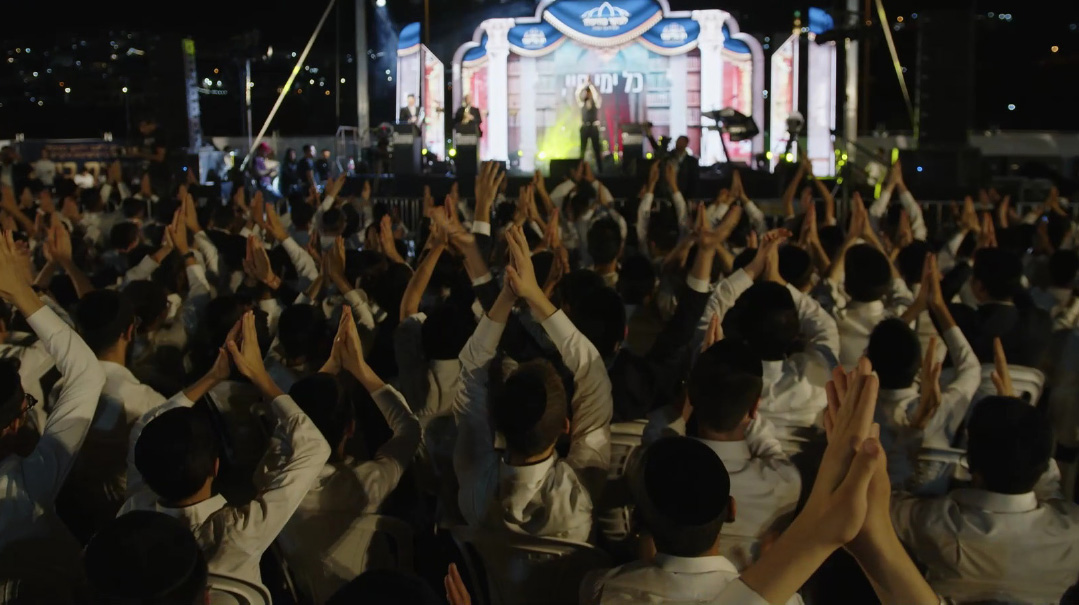
Harness the Power
YISRAEL SOSNA, son of famed paytan Armond Sosna a”h, is a top keyboardist who leads his own wedding band and is a popular arranger and conductor of singing events for all ages and stages, in addition to making his rounds of the yeshivos, camps, and chedarim under his Koolulam brand “Tein Belibeinu.”
HOW I PREPARE
It can take a couple weeks or more. Depends what the clients want to do, how much they want to be challenged by the music. There are no weeks of rehearsals before the actual event, so for a Koolulam to work, the vocal arrangements have to be very simple, something anyone can learn and remember and sing in just 50 minutes. It takes a lot of thought for me to write those arrangements for the main voice and the harmony. Depending on the budget, sometimes I bring my musicians along, and then I have to prepare them for their role, too. On Pesach, we’ll be doing this with 2,000 children in a forest clearing, and that will require additional technical preparations.
HOW I KEEP THE CROWD ENGAGED
You have to flow with whatever comes. I was once at an outdoor event in Haifa with a very large group of teenagers, and had just started to teach the song, when it suddenly and unexpectedly started to rain. There was nowhere to go, so I covered the equipment, and the boys just lifted up their chairs over their heads to stay dry. For 40 minutes it poured, and we just sang and sang any song we could think of. Then it stopped, and we continued learning the arrangements for the Koolulam.
THE SONGS THAT WORK BEST
I choose older songs that everyone knows. This makes it easier because I don’t have to teach it from scratch. I sit with the client and we work out what they are looking for — it could be something seasonal, or even their own yeshivah theme song.
THE CONCERT THAT ALMOST WASN’T
A few weeks ago, I was booked to do an event in a cheder. They wanted me to create a mass singing event on the song “Davenen.” The problem was, I had been running a high fever for a week, and even once the fever broke, I was very weak. I couldn’t talk, I couldn’t go out, and I certainly couldn’t travel to another city and teach hundreds of kids to sing. The principal understood when I told him I had to cancel, but he got back to me that the kids were devastated — they’d been waiting for this treat for a month, and had worked toward it with their learning and behavior. I told him there was nothing I could do, but he had a suggestion. “I’ll tell all the kids to daven that you should feel better.”
The morning of the event, I went to shul and came back, then realized that I felt okay. The weakness had passed. I picked myself up and went to Yerushalayim, led the singing, and it was a beautiful event. All from some “davenen”!
Another time, after a beautiful Koolulam with 2,000 children, the video was mistakenly erased. True, the activity is worth it just for the experience, but most of my clients want the video, too.
MY BIGGEST CHALLENGE
Maintaining everyone’s focus, especially at an event that comes at the end of a long day. In October 2022, we did the song “Achas Sha’alti” at an event for 3,000 bochurim from dozens of yeshivos who belong to the “Levaker Beheichalo” project. It was bein hazmanim, after Succos, and they arrived in Karmiel in the Galil after a long day trip, which made it hard to grab everyone’s focus. In the end, though, the outcome was stunning.
With children, they grasp very quickly, but they lose concentration easily, too. With kids’ groups, I have to come up with other songs or musical hand-clapping games that are fun and break things up.
MY AUDIENCE CONNECTION
I have a wedding band, so bochurim come over all the time to give me feedback. One group told me that they sing my arrangements every Erev Shabbos in yeshivah.
MY PERSONAL FAVORITE
I love each one I work on, but there was one group, the yeshivah camp of Yeshiva Eish Hatalmud, who told me in advance that many of the boys are very musical and wanted to be challenged by singing something complex. We chose the song “Ahavat Torah” by Ari Gold and Motti Weiss. I went all out with the harmonies, and results were unbelievable.
MY INSPIRATION FOR THESE EVENTS
For me it started on a visit to the Kotel during Elul. Tens of thousands of people stood and chanted together, then broke into song for the Selichot refrain, “Adon haselichot, bochein levavot….” It was so moving, a wave of song uniting the hearts of Jews. I decided that mass singing has something very powerful and I wanted to be involved in harnessing this power.
Rabbosai, You Want to Sing?
BENTZI STEIN, a young Vizhnitzer chassid from Bnei Brak, started out as a member of Malchus Choir, but his real love was composing. He’s written dozens of songs for popular singers, including the Avraham Fried/Ari Hill duet “Abba Abba,” Beri Weber’s “Niggun Kerestir,” and Avraham Fried’s “Ototo.” He uses the Koolulam model to bring his songs to bochurim all over Eretz Yisrael.
HOW I PREPARE
At the beginning I would sit in my studio at home and work on the song, figuring out the harmonies and accompaniment. But it happened more than once that when I came to the event, I realized that the crowd would prefer another song, maybe something simpler, lighter, or more up to date. I had to switch on the spot. I’ve now started to work more spontaneously, having some songs in mind but then looking at the crowd and choosing based on where they’re holding. I once arrived all prepared, when a bochur challenged me to create a Koolulam on the song “Da Lecha Beni.” Baruch Hashem it came out great, and the guys enjoyed the fact that they were learning the song along with me.
Kids today love music. I once told a group in Elad that I had a brand-new song for them, “Tattele Kum Shoin Aheim.” It really was new — but they still started to sing it. Half of them knew it already.
THE SONGS THAT WORK BEST
I find that almost anything works. I sometimes bring along a fresh composition that hasn’t come out yet. The boys love the newness of it.
MY PERSONAL FAVORITE
I went to Kiryat Sefer to a school called Darkei Avoseinu. There were roughly 1,000 kids in a big stadium, and we sang a few of my songs, Koolulam-style. The kids were all involved, and the singing was uplifting, really beautiful. As I left, I felt so warmed and inspired that I called my mother to tell her the event had been successful, and she said “Bentzi, I’m here. I was here standing at the door the entire time.”
MY BIGGEST CHALLENGE
I sometimes do a Koolulam for 2,000 young boys in the big chadarim. They’re quick to learn the music, but I have to become a badchan to hold their interest. I always share with them how I composed the song, and tell them stories and jokes. If it’s not a video opportunity, we run the activity in an hour or less, but if they want to do a professional recording of it, it can take up to two hours.
Some clients just want a fun and fulfilling activity for the boys, others intend to use the singing event as a public relations tool by posting videos online. Obviously, that raises the price because it requires a sound technician and videographer. I’ve been happy to find that, yes, there still are (some) people around who simply want to enjoy and maximize the experience in the moment, without pictures and video.
THE CONCERT THAT ALMOST WASN’T
I have this feeling every time — I arrive and the guys look like they’re falling asleep, uninterested. But I bring all my energy and spirit with me, and I ask “Rabbosai, do you want to sing? Do you want to do a Koolulam?” and in the end, it’s always a big, resounding “Yes!”
HOW I KEEP THE CROWD ENGAGED
The boys usually sit in their grades, kitah vav, kitah zayin, or shiur alef, shiur beis, and so on. I direct each grade to sing out the high “Tatteh,” from my song “Abba, Abba, Abba, Melech Ha’olam,” so I can hear which are the strongest and highest voices. Then I can assign the roles accordingly, or put the youngest shiur together with another grade, if they are weaker singers.
I arrive with a band, occasionally a choir or a full orchestra, depending on the client’s budget, but although a choir helps the boys learn the arrangements, none of these are really necessary. The entire performance is the voices, and the rest is just accompaniment.
MY AUDIENCE CONNECTION
I ran a music event for 800 children at a cheder in Petach Tikvah, and the principal called me up early the next morning with an offer: “You were so successful with our boys, can I invite you to be a rebbi on our team?” Maybe one day….
(Originally featured in Mishpacha, Issue 956)
Oops! We could not locate your form.

